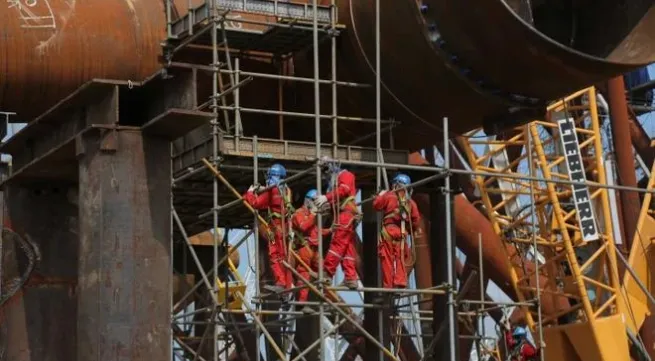Petrovietnam looks towards sustainable green fuel technology

Common energy transition trend
A representative from the group’s strategic board said that the demand for green ammonia is expected to increase to 223-250 million tonnes by 2050, primarily for the fertilizer, chemical, and energy industries.
Technologies for producing green ammonia from renewable energy sources are being developed and widely applied worldwide, with the goal of reducing greenhouse gas emissions. However, the production cost of green ammonia is currently higher than that of traditional ammonia.
Vietnam now has about 10 ammonia production plants, primarily using traditional technology based on natural gas.
Reports and analyses at the meeting showed that Vietnam has several advantages, such as natural gas resources, experience in ammonia production, and large energy corporations. However, the country also faces numerous challenges, including high investment costs, and a lack of specific support policies or experience in green ammonia production.
Petrovietnam’s strategic board said there are several directions in the development phase for green ammonia in Vietnam. These include gradually upgrading traditional ammonia plants to green ammonia production technology, and utilising renewable energy sources. Carbon capture and storage technology, natural gas, and agricultural by-products are also key parts of green production.
In addition to green ammonia, delegates also discussed the development and use of sustainable aviation fuel (SAF).
Accordingly, Vietnam has several advantages, such as raw materials from agricultural, forestry, and industrial waste, and infrastructure for mixing and using SAF. However, the country also faces many challenges, including the lack of specific policies and regulations for SAF, as well as the absence of national standards and guidelines for SAF production and use.
Development orientations of Petrovietnam
Tran Binh Minh from the Petrovietnam’s Board of Members noted that biomass conversion technology and fuel synthesis from syngas are considered highly promising, but require high technology investment and high costs.
Careful consideration of factors such as market demand, technology, and raw material sources is necessary to choose suitable development orientations, he said.
Delegates underlined the need to collaborate with foreign enterprises and develop new processing technologies. They also highlighted the potential to utilise wastewater from paper mills for production, which could help minimise greenhouse waste.
They also focused their discussion on measures to address several challenges, such as issues related to mechanisms, policies, and investment costs.
Regarding the development orientation of the firm, Chairman of the Board of Directors of Petrovietnam Le Manh Hung said the firm has established a strategic plan for energy transition integrated with its development strategy.
He pointed out that the trend toward green ammonia is irreversible, so specific policies and mechanisms are needed to foster the development of the field.
Tags:





